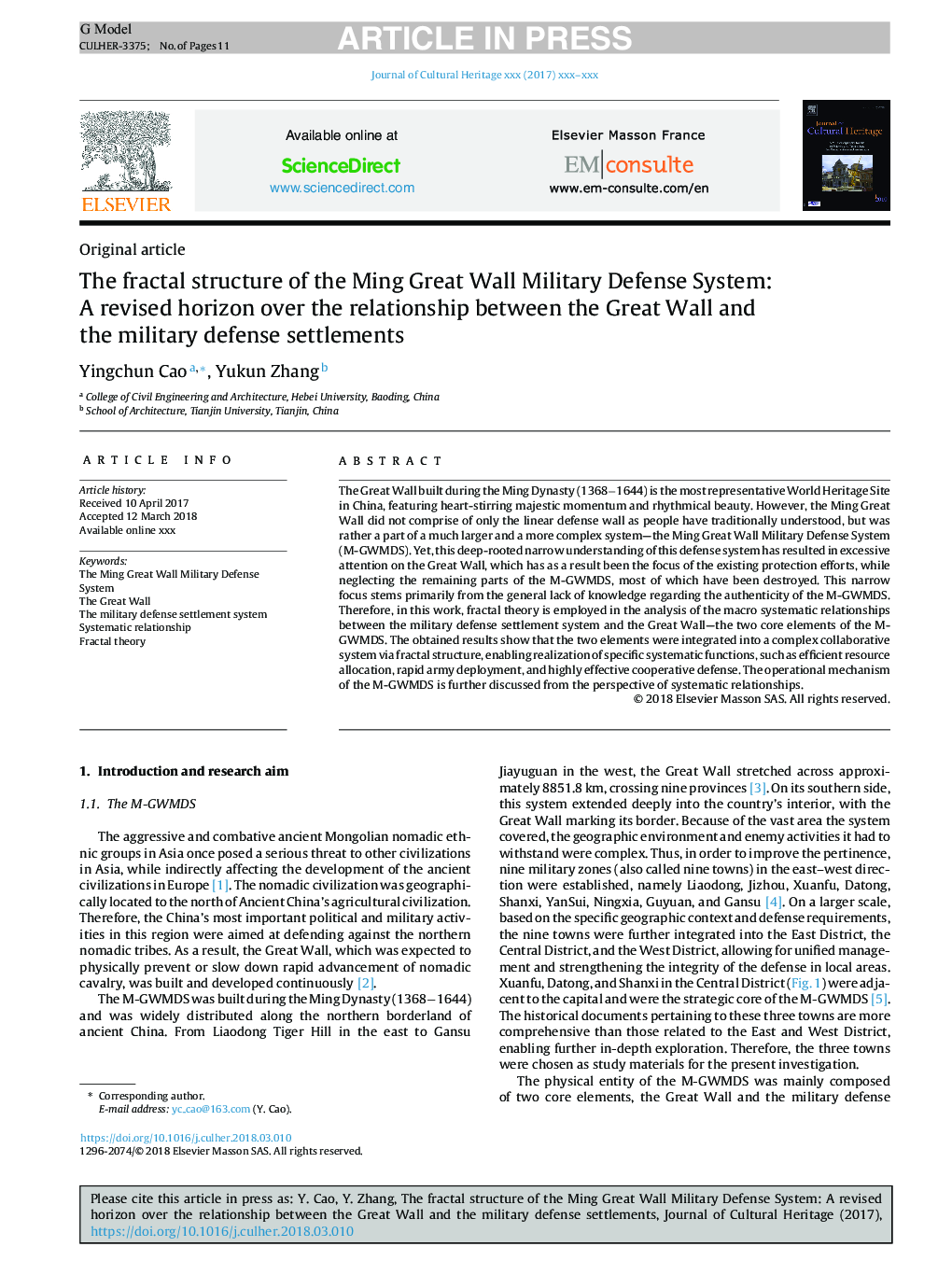| Article ID | Journal | Published Year | Pages | File Type |
|---|---|---|---|---|
| 8965283 | Journal of Cultural Heritage | 2018 | 11 Pages |
Abstract
The Great Wall built during the Ming Dynasty (1368â1644) is the most representative World Heritage Site in China, featuring heart-stirring majestic momentum and rhythmical beauty. However, the Ming Great Wall did not comprise of only the linear defense wall as people have traditionally understood, but was rather a part of a much larger and a more complex system-the Ming Great Wall Military Defense System (M-GWMDS). Yet, this deep-rooted narrow understanding of this defense system has resulted in excessive attention on the Great Wall, which has as a result been the focus of the existing protection efforts, while neglecting the remaining parts of the M-GWMDS, most of which have been destroyed. This narrow focus stems primarily from the general lack of knowledge regarding the authenticity of the M-GWMDS. Therefore, in this work, fractal theory is employed in the analysis of the macro systematic relationships between the military defense settlement system and the Great Wall-the two core elements of the M-GWMDS. The obtained results show that the two elements were integrated into a complex collaborative system via fractal structure, enabling realization of specific systematic functions, such as efficient resource allocation, rapid army deployment, and highly effective cooperative defense. The operational mechanism of the M-GWMDS is further discussed from the perspective of systematic relationships.
Keywords
Related Topics
Physical Sciences and Engineering
Chemistry
Physical and Theoretical Chemistry
Authors
Yingchun Cao, Yukun Zhang,
